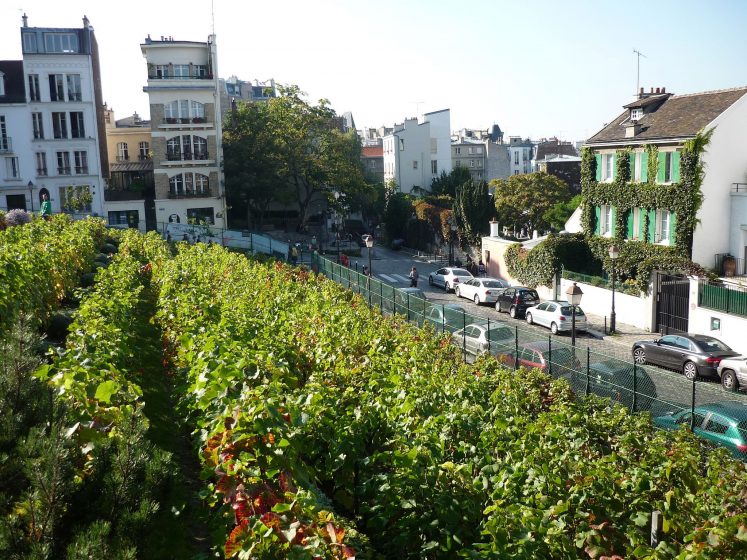All About City Blooming
All About City Blooming
Blog Article
City Blooming for Dummies
Table of ContentsExcitement About City BloomingCity Blooming Things To Know Before You BuyAll About City BloomingAn Unbiased View of City BloomingLittle Known Facts About City Blooming.
Fascinated in growing food for sale in the City of Chicago? Below is a checklist of often asked inquiries regarding the guidelines and guidelines that farmers should think about when intending an urban agriculture job.
The zoning change does not change any type of various other codes handling composting, structure permits, acquiring or leasing City owned residential or commercial property, company licenses or ecological contamination. There are existing codes that manage these issues and they stay in full impact and might apply to your task. Area yards are generally owned or managed by public entities, civic organizations or community-based organizations and maintained by volunteers.
Urban farms grow food that is planned to be offered, either on a nonprofit or for-profit basis. Due to their business function, metropolitan farms call for an organization permit.
The Greatest Guide To City Blooming
Composting is permitted yet just for plant material that is produced and used on website. The quantity of garden compost material can not surpass 25 cubic yards at any kind of offered time according to the standards in 7-28-715 of the City's Municipal Code. Yes. Since the dirt at many brand-new yard websites requires amending, compost, dirt, timber chips, or other products can be acquired to create or improve the growing space - indoor plants.

If a structure authorization is called for after that the hoophouse will certainly be thought about an accessory structure. You can find out even more regarding the building permit demands by speaking to the Department of Buildings. The 25,000-square-foot size limit is planned to protect against a single community yard from dominating a given block or diminishing the block's existing property or industrial character.
The limitation does not apply to yards located in Public Open Area (POS) districts. Can there be more than one area garden that is 25,000 square feet on a solitary block? Fencing is not called for, nevertheless, gardens that have large auto parking locations might be needed to install fencing or other landscape design features.
Getting The City Blooming To Work
B1 & B2 districts require that all commercial usage tasks be performed inside your home. Is fence needed for metropolitan farms? Fences may be required, along with landscaping and screening, for certain parking areas and outdoor work or storage space locations depending on place and the specific task taking location.
Urban ranches require structure permits and zoning approvals prior to construction (sustainability). Other forms of city evaluation may be called for depending on particular frameworks, tasks, size, landscape design, licensing, public health and stormwater management concerns.
The Division of Business Matters and Consumer Protection can help establish the particular type of service permit that's called for. Off road car parking is required for a lot of commercial tasks in Chicago. The required number of car parking areas is based on the number of workers functioning on website and not the square footage of the growing area.
Not known Facts About City Blooming

A city ranch can offer garden compost material produced on site, nevertheless, the operation needs to conform with the regulations in 7-28-715 of the Chicago Municipal Code. Aquaponic systems are permitted inside on urban farms in many zoning districts.
Approximately 5 hives or swarms of honey may be kept as an accessory usage. Nonetheless, beekeepers have to sign up with the Illinois Division of Agriculture. For additional information regarding the recommended zoning modification you may contact the Department of Real Estate and Economic Growth, Bureau of Preparation and Zoning at 312.744.8563.
Farming in cities and urban areas A city ranch in Chicago. Urban agriculture describes different practices of growing. https://www.easel.ly/browserEasel/14490178, handling, and distributing food in city areas. The term additionally puts on the location activities of pet husbandry, tank farming, beekeeping, and cultivation in an urban context. Urban farming is distinguished from peri-urban farming, which occurs in backwoods at the edge of suburban areas.
The Best Strategy To Use For City Blooming
It can include an activity of natural growers, "foodies" and "locavores", who seek to develop socials media based on a shared ethos of nature and community holism. These networks can establish using official institutional assistance, becoming integrated into local town as a "transition town" activity for lasting like it metropolitan growth.
Some of the very first proof of urban farming comes from Mesopotamia.
Report this page